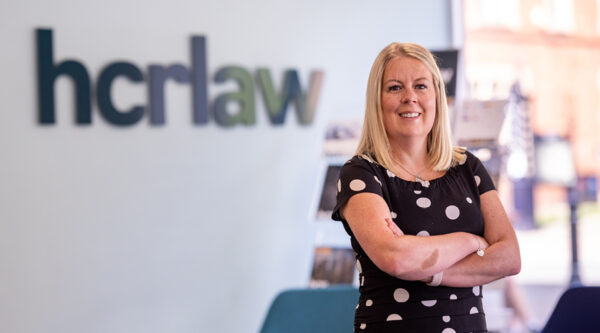

When considering the development of the academy sector in England it is important to recognise that it is a sector which is relatively early in its development. Whilst a number of early sponsor academies were established in the 2000s, the majority have converted from maintained schools following the Academies Act in 2010 and so have only operated in their current form for around ten years.
The sector is still finding out what works and what the right approaches are, and it takes time and effort to define what is the best size, approach and practice. In addition, many of those involved in converting their school and establishing an academy trust have moved on or retired, so we are now seeing ‘second generation’ trust leaders and governors taking on responsibility for developing their trusts strategy.
At the start of 2023 of the total of around 2,400 trusts, some 1,250 are single academy trusts (SAT), though SATs now account for just over 10% of the total number of academies since the majority of academies are now part of multi-academy trusts (MAT). The Schools White Paper 2022 stated that there was an expectation that all academies would be within a MAT by 2030. However, the Government’s dropping of the Schools Bill means that there is currently no legislative route for requiring SATs to join a MAT.
There will be a general election before the end of 2024 which may lead to new ideas, initiatives and policies, but in the meantime, with both of the main political parties having supported the academies programme, schools may wish to consider their own position and potential benefits in respect of joining a MAT.
Where does this leave the large number of SATs, their leaders and governors/trustees?
The school sector is very disparate; there are schools of different sizes, settings (urban, village or rural) and many are faith based. However, what they have in common is schools embedded in their communities and a real sense of belonging, attachment and responsibility for children and families.
Many SATs already have a long history of working effectively and collaboratively with other schools, sharing best practice and organising shared training, with staff moving between schools to develop their skills and expertise and for promotion and career development and will find that these benefits will only continue to strengthen on joining a MAT.
It is key to ensure that the funding and resources which schools are provided with are deployed effectively and efficiently (i.e. in a business like way), but there remains an element of hesitation from some schools in respect of forming or joining MATs.
Whilst many MATs are excellent and wholly support their academies, providing central support in purchasing, creating opportunities to share resources, and providing greater opportunities for staff development, it is important not to appear to have overlarge, remote ‘head offices’ with teams of people who are not well-connected with schools.
The challenges for schools, as across much of society, are significant. Changing demographics, economic and financial pressures, increasing educational needs, post-pandemic demands, decline in support from other bodies are all placing additional expectations on our schools and those responsible for them.
In addition, for SATs there are particular concerns and feelings, or indeed reality, of vulnerability of being a SAT in the current system. As a trustee it may feel that the Department for Education (DfE) is targeting and pressuring SATs, there are financial sustainability concerns and issues relating to retaining good staff, with smaller SATs probably feeling this most acutely.
Given the current position and environment, what should SAT leaders and governors/trustees be doing?
Each SAT will have its own particular context, opportunities and challenges. The wide range of strategic and operational factors which each is experiencing will need to be considered. These will include their school development and improvement priorities, financial position, pupil number changes, staff and governance development and succession planning. There will most probably be scope for improved resource allocation, including the use of integrated curriculum and financial planning, on joining a MAT. However, risk management, including cyber risks, must continue to receive the required level of attention.
From a trust development perspective, unfortunately, there is no guidebook to refer to. It is important to be proactive and take control where possible. There are a range of strategic decisions SATs will need to make, and they need to allocate appropriate time and resource to this.
SATs should review their current position and may find it helpful to prepare a strengths, weaknesses, opportunities, and threats (SWOT) analysis when considering joining a MAT. Some of the questions SATs may ask themselves include: Do we want to continue as a SAT, if we can? Is this viable, and is it the best route for our school? Do we wish to establish a new MAT?
SATs may also find it helpful to maintain information summaries of other local trusts and consider contacting a number of these trusts to have exploratory conversations, with a summary of thoughts including the SAT’s vision, culture, expectations and any non-negotiables – for example, whether it wishes to retain the name of the school. SATs should also have effective robust conversations with the DfE Regional Director to understand their current thinking and support, including whether they are open to the possibility of the SAT establishing a new MAT.
From this scoping and investigative work, the SAT will have identified a number of possible options, including staying as it is, and can prepare an appraisal of the various options to lead trustee discussion, and wider work with other trusts and the DfE Regional Director.
Finally, SATs need to be mindful of the time pressures on schools of undertaking such work. Governors/Trustees are volunteers, and their time should be used efficiently and effectively. Trustees should be mindful of the need to carry out regular reviews, including commissioning external governance reviews, of their school and should therefore consider how this can be used strategically to consider the best option for your SAT.
This article has been produced by Stephen Lester MBE, who is Trustee and Vice-Chair of a single academy trust in Cumbria, and a retired Chief Operating Officer of a MAT. Stephen is also the Chair of the ISBL Trustees.










